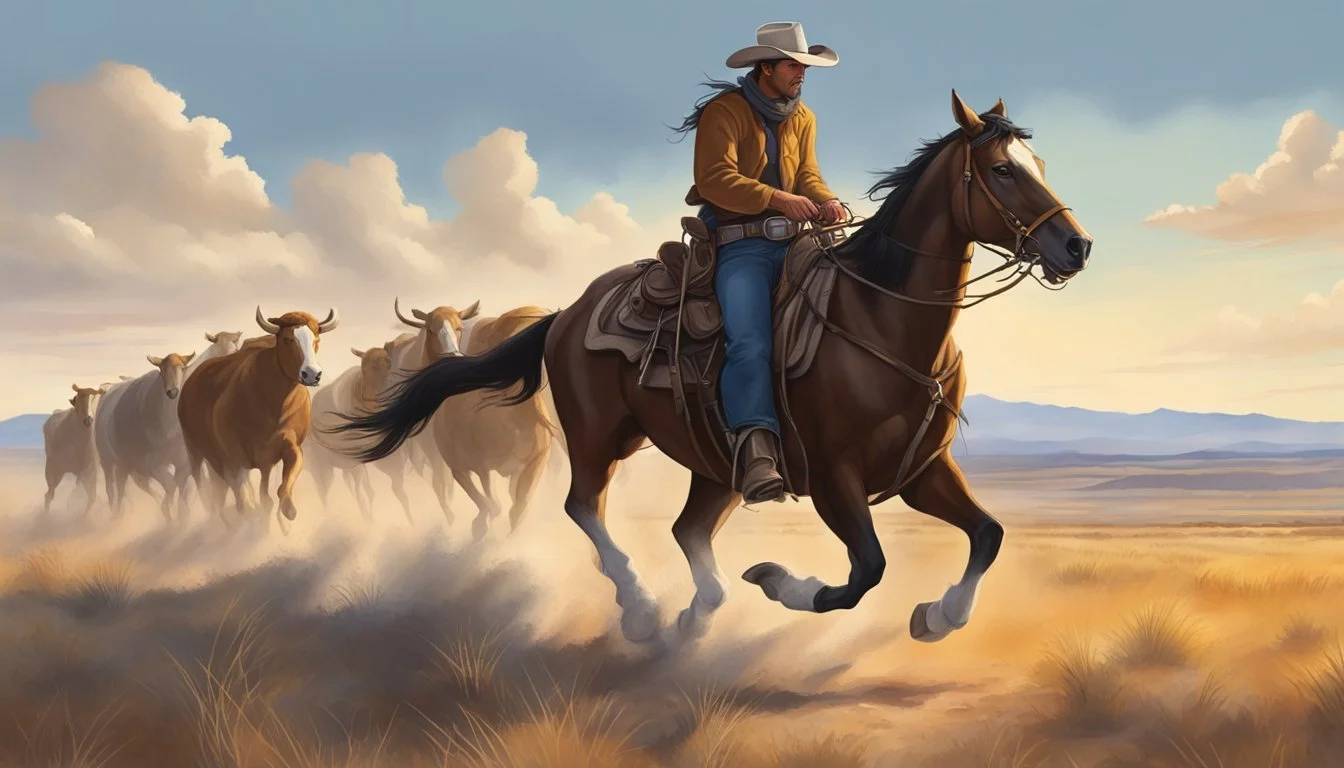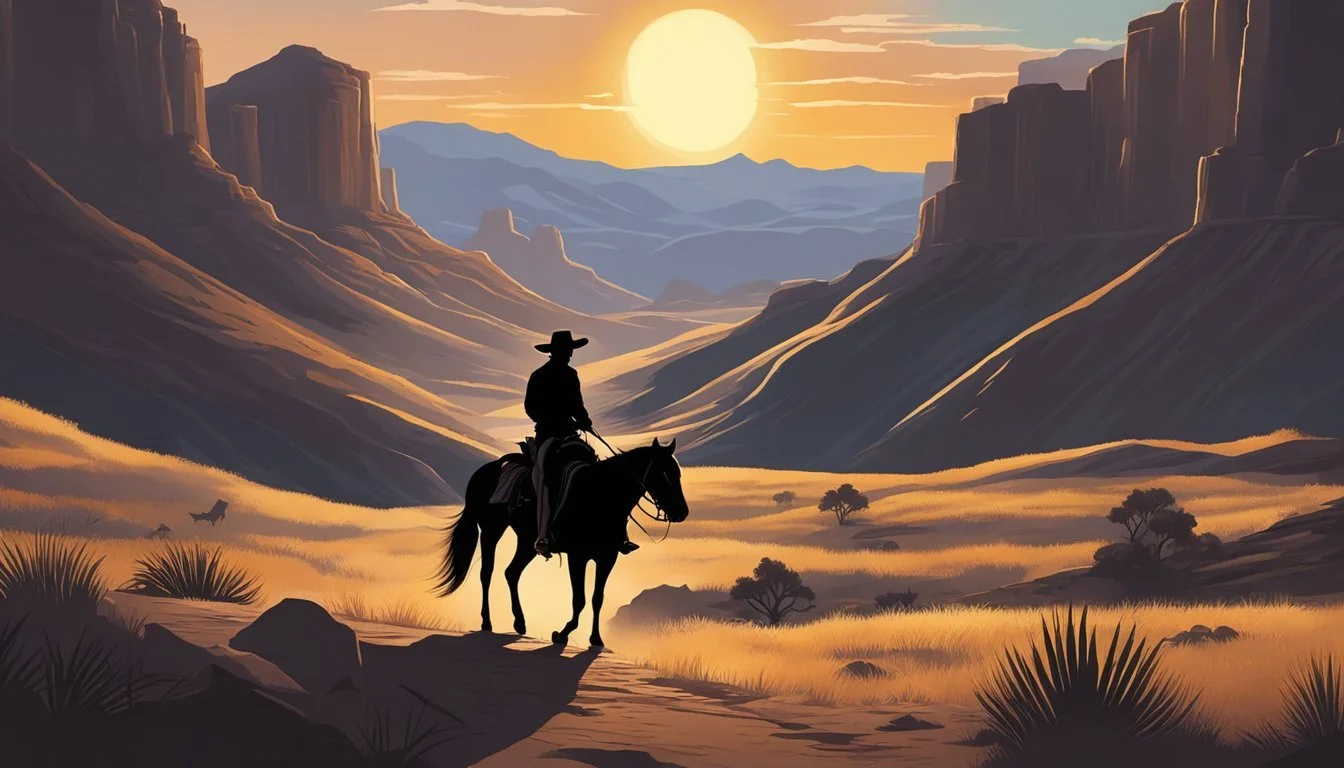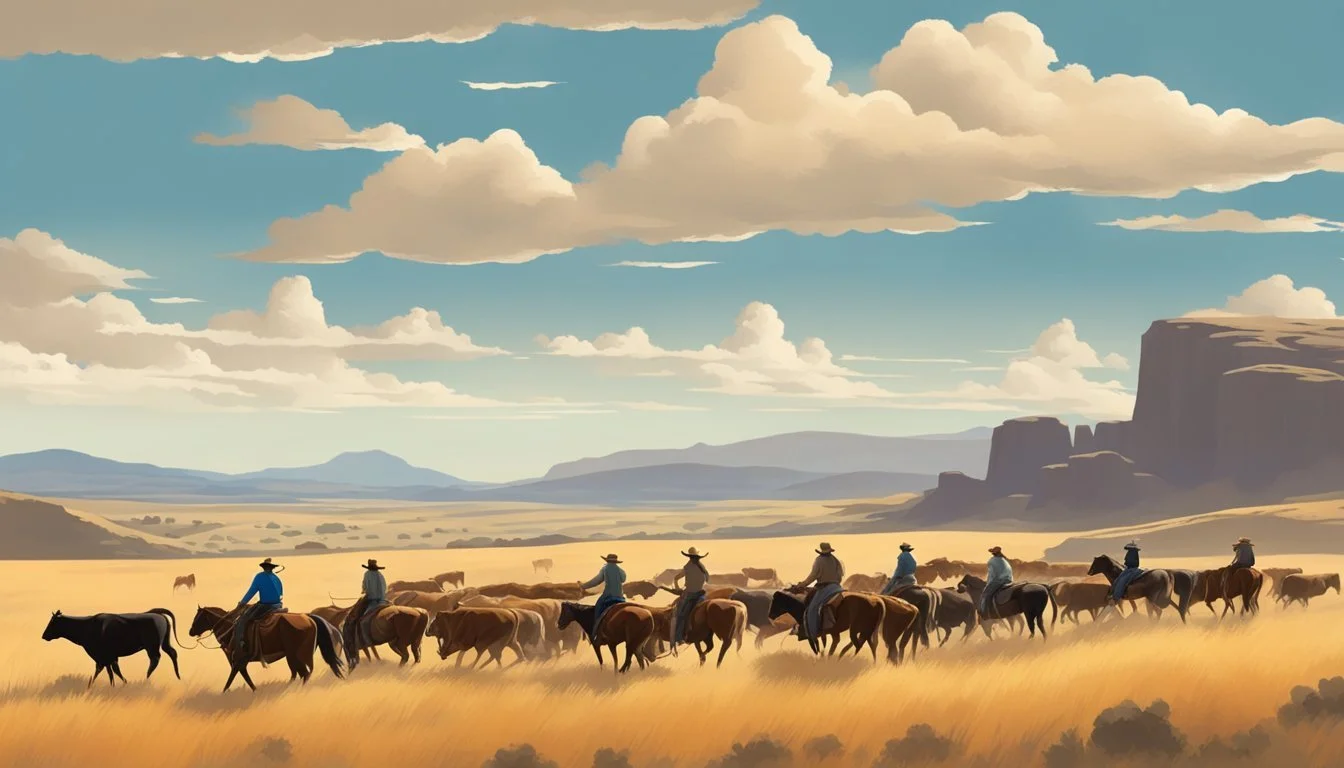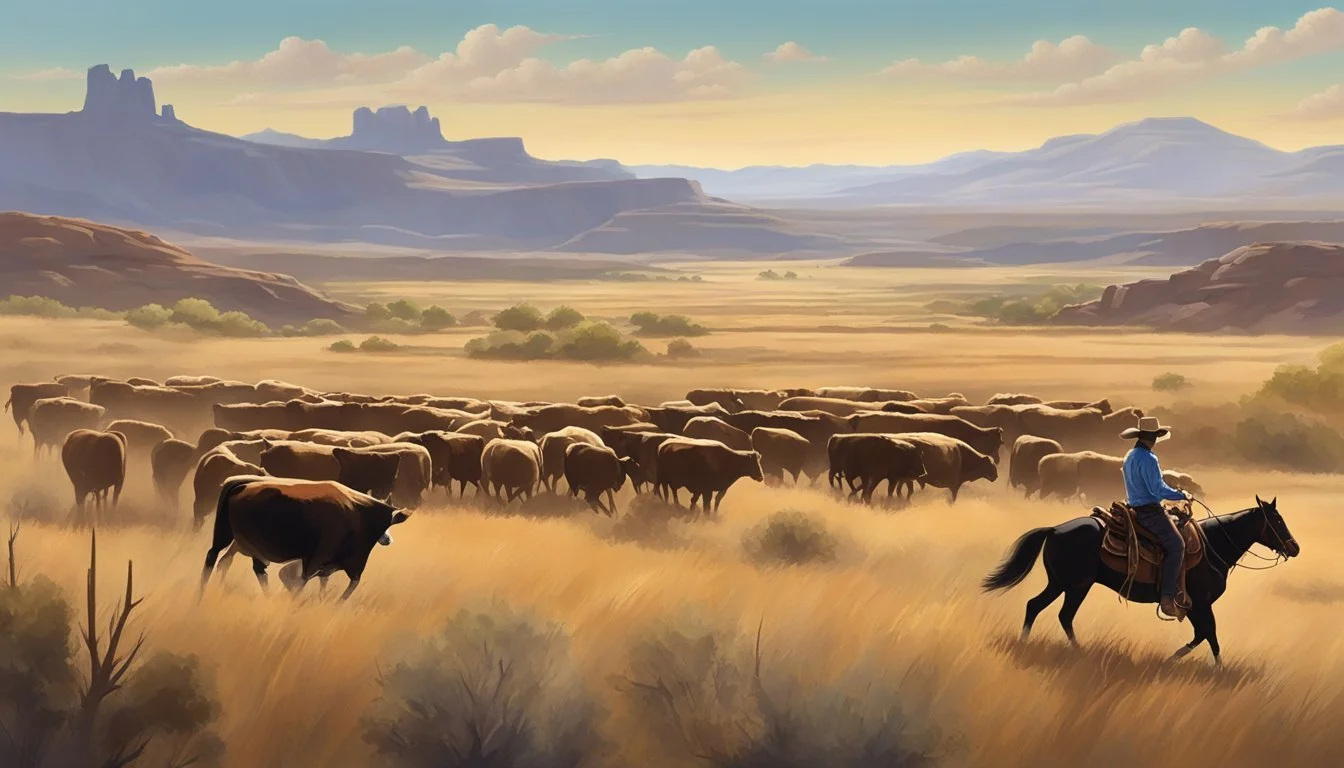The Texas Cowboy's Role in Western Literature
Unveiling the Iconic Figure
The image of the Texas cowboy is an iconic symbol that has played a significant role in the tapestry of American culture, especially within the realm of western literature and storytelling. The persona of the cowboy emerged from the practical needs of cattle herding and ranching in the vast and rugged landscapes of Texas, but has since transcended these humble beginnings to become a figure emblematic of traits such as courage, freedom, and adventure. This transformation from historical figure to a staple of narrative tradition mirrors the broader evolution of Western lore.
Western literature has framed the Texas cowboy as a central character that embodies the spirit of the American West. Through tales of bravery, exploration, and the trials of frontier life, cowboys have come to represent an era marked by both its challenges and the opportunities it presented for self-definition and heroism. The western genre, with its emphasis on the cowboy archetype, speaks to the values and myths that are deeply rooted in American culture, capturing the imagination of readers and influencing storytellers across various mediums.
The influence of the Texas cowboy in literature is not just a chapter in history but an ongoing dialogue. Current authors continue to draw on the rich historical background of the cowboy, blending traditional motifs with modern sensibilities. Aspects of this heritage can be seen reshaping the narratives within both independent and mainstream cinematic productions, as well as in the written works that both honor and question the legend of the Texas cowboy. The cowboy's presence in storytelling not only celebrates a critical component of the Texan identity but also resonates universally as the embodiment of an enduring American legacy.
Historical Emergence of the Texas Cowboy
The historical roots of the Texas cowboy trace back to Spanish influences and the transformative period following the Civil War, marking a significant era in the economic and cultural development of Texas.
Spanish Roots and Vaqueros Influence
The narrative of Texas cowboys begins with the vaqueros of Spain, who were skilled horsemen and cattle herders. When Spain colonized Mexico, these Spanish vaqueros significantly influenced the region through their expertise in managing livestock. Over time, their techniques and lifestyle became the foundation of the cowboy culture in Texas.
Post-Civil War Expansion
After the Civil War, the demand for beef in the northern states surged, leading to the iconic cattle drives. These drives were critical to shaping the Texas cowboy's role within American history. Cowboys drove massive herds across vast distances, encountering challenges that demanded resilience and adaptability. This period saw the proliferation of cowboy life as integral to the identity of post-Civil War Texas.
Civil War to Cattle Drives
Post-Civil War Texas faced an economic transformation with the expansion of the cattle industry and initiation of large-scale cattle drives, leading to significant economic growth.
Reconstruction and Cattle Industry
With the American Civil War's conclusion, Texas entered a period of economic and social rebuilding known as Reconstruction. The cattle industry, with an abundance of free-ranging, longhorn cattle, became central to Texas's recovery efforts. Texans capitalized on untended herds that multiplied during the war. The demand for beef in the eastern United States and northern cities provided an economic opportunity for Texas ranchers. The industry's rapid growth was pivotal in restoring the state's economy during the Reconstruction era.
Main Cattle Breeds: Texas Longhorns
Key Figures: Ranchers who amassed large herds
Economic Impact: Resuscitation of Texas economy post-war through cattle sales
Trail Drives and Economic Growth
Cattle drives emerged as the fundamental method for transporting Texas cattle to railheads in Kansas, from where they were shipped to meatpacking centers in Chicago and other cities. The Chisholm Trail, one of the most important routes, facilitated the movement of cattle from Texas ranches to Abilene, Kansas. Trail drives became vital economic activities, requiring coordination, logistics, and the cowboy's skills. The economic boom from these drives increased wealth and market size, feeding the nation's demand for beef.
Key Trails: Chisholm Trail, Goodnight-Loving Trail
Transportation Method: Cattle drives to railheads
Economic Role: Increased market size and provided wealth through beef sales
Cowboy Life and Culture
Cowboy life and culture extend far beyond the iconic image of a solitary figure riding across the Texas plains. It is a tapestry of daily responsibilities, social traditions, and celebratory events that exemplify the spirit of the American West.
Daily Routines and Herding Techniques
The day for a cowboy starts early, often before sunrise. Cowboys are attentive to their environment and knowledgeable about the techniques required to handle and herd cattle effectively.
Morning: They begin with feeding and inspecting livestock, mending fences, and checking water supplies.
Herding: Utilizing skills passed down from the vaqueros, they expertly maneuver horses and use lassos to guide and control cattle.
Community and Camaraderie
Cowboys are not just solitary figures; community and camaraderie are foundational to cowboy culture.
Social Structure: They often work in teams, relying on one another for safety and assistance in managing the herds.
Cowboy Code: An unspoken set of ethics emphasizing respect, integrity, and hard work fosters a strong sense of brotherhood among cowboys.
Rodeos and Festivals
Rodeos and festivals are vibrant expressions of cowboy culture, showcasing the skills required for ranching life.
Rodeos: These competitions highlight abilities such as riding broncos, roping cattle, and more, with contestants competing for accolades and prizes.
Festivals: Seasonal gatherings celebrate the cowboy legacy, featuring music, food, and dance, allowing for a communal appreciation of the cowboy's way of life.
Cowboy Gear and Fashion
Cowboy gear has always been an integral part of the Western narrative, intricately designed for practicality and survival in the rough terrain. It has evolved to become a prominent symbol in Western literature and storytelling, where every piece of attire carries its own history and significance.
Function and Symbolism
Cowboy Hat: The quintessential cowboy hat was not only a shield against the harsh sun but also came to represent the cowboy’s rugged individualism. Different styles emerged, such as the high-crowned, wide-brimmed designs, which provided insulation and protection from the elements.
Boots: Initially crafted for protection when riding, cowboy boots grew to symbolize the tenacity of the Western spirit. With pointed toes that slid easily into stirrups and high heels that prevented slipping, these boots combined function with enduring style.
Chaps: Designed to safeguard the rider’s legs from brush and injury, chaps were another practical piece of cowboy attire. Made from sturdy leather, they were essential for the cowboy’s daily tasks and were often personalized with intricate designs, making them both useful and a fashion statement.
Rope: The rope, or lariat, was a tool of the trade for cattle wrangling, but it also held a powerful place in cowboy lore, epitomizing the skills and dexterity of its user.
Evolution of Cowboy Apparel
Cowboy fashion has journeyed from the dusty trails to the center stage of American culture, significantly influenced by the Western genre in literature and film.
Westerns: These narratives brought cowboy attire into the public eye, romanticizing the lifestyle and embedding pieces like the cowboy hat and boots into mainstream fashion.
Modern Interpretations: Throughout the years, Western wear has been continually reinterpreted by fashion designers, integrating contemporary aesthetics with traditional elements. Western-themed collections have borrowed the characteristic features of cowboy gear, translating them into modern apparel.
In literature and cinema, cowboy gear remains a powerful element, lending authenticity to characters and settings, while also shaping the perception of the American West within popular culture.
Representation in Literature and Film
Texas cowboys have been a staple in Western literature and film, characterized by their gritty resolve and frontier spirit. They embody the essence of the Wild West, serving as protagonists in storytelling that captures the imagination of audiences globally.
The Cowboy Novel
The cowboy novel is a significant genre within American literature, often focusing on the life and adventures of cowboys in the Old West. Zane Grey, a prominent author in this genre, painted vivid pictures of the Western frontier, intertwining human stories with the harsh realities of cowboy life. His works, along with Owen Wister's "The Virginian", pioneered the cowboy novel and established the cowboy archetype in literature. "The Virginian" is particularly noteworthy, as it was one of the first novels to romanticize the cowboy as a hero, setting a template for many stories to come.
Westerns and Texas Cowboys
In film, the Western genre has had a profound influence, with Texas cowboys frequently at its heart.
Key Films:
Stagecoach (1939)
Red River (1948)
The Searchers (1956)
These films characterized cowboys not just as lawmen or ranchers, but as complex heroes who often grappled with personal and societal challenges that resonated with viewers. Texas cowboys in these movies were portrayed as the epitome of rugged individualism and were integral to the development of the genre's themes of courage, freedom, and the struggle against wilderness and villainy. They also played a role in shaping the identity and legends of the American West in popular culture.
Texas Cowboys in Myth and Reality
The figure of the Texas cowboy plays a dual role in Western literature and storytelling, oscillating between the myth of the rugged individual and the authentic, often sentimentalized, representation of Western life.
The Rugged Individual
The Texas cowboy has long been emblematic of rugged individualism, a personification of resilience in the face of the untamed West's challenges. This character is often depicted tackling the vast, unforgiving Texan landscapes, a solitary symbol of freedom and self-reliance. The cowboy's skills in horsemanship and cattle herding are crucial parts of this narrative. In reality, though, these cowboys were part of a larger working community, dependent on one another for survival and success in their ventures.
Skills and Responsibilities:
Horsemanship
Herding and managing cattle
Repairing fences and equipment
Authenticity vs. Sentimentality
While literature and films often depict the cowboy with a certain sentimentality, glossing over the hardships with a heroic and romantic veneer, the true life of a Texas cowboy was far more complex.
Myth: Cowboys are lone heroes who always triumph over adversity.
Reality: Cowboys faced harsh, often unglamorous conditions, working long hours under challenging circumstances, being a diverse group who frequently depended on one another.
The authenticity of the cowboy's existence led to a rugged lifestyle that was anything but glamorous, involved diverse groups including the formerly enslaved, immigrants, and Native Americans, and included the mundane responsibilities that sustain a ranching operation.
Diverse Cowboys:
Native Americans
Formerly enslaved individuals
Immigrants
Unromantic living conditions and tasks:
Menial, repetitive work
Harsh weather conditions
Isolation from society
Texas cowboys were not the solitary figures seen in many stories; they were an essential part of a social and economic system that developed in Texas during the 19th century. The sentimental view often overlooks these aspects of cowboy life, which included a varied and multicultural workforce as pivotal to the growth of the region’s ranching industry.
The Role of Cowboys in the Development of Texas
The Texas cowboy played an integral role in the state's development, forging an industry and culture that left a lasting impact on the region.
Ranching and the Growth of Territories
The vast landscapes of Texas provided fertile ground for ranching to thrive, with its inception during the Spanish colonial period. Ranches emerged as central hubs for livestock management, especially in regions such as South Texas. Prominent figures like Richard King of the King Ranch were pivotal, with his ranch becoming a cornerstone in Texas history for its innovative ranching practices. These sprawling territories pushed the boundaries of Texas, which necessitated robust herding and management skills—that's where cowboys came in.
Livestock Handling: Cowboys were the backbone of ranch operations, adept at handling vast numbers of cattle and driving them across often treacherous terrains to market.
Territorial Expansion: As ranches flourished, they prompted the expansion of territories with cowboys leading cattle drives, thus contributing to the westward growth of the state.
Economic and Cultural Impacts on Texas
The economic and cultural impacts of cowboys on Texas are profound, reshaping the state's identity.
Economic Foundation: The cattle industry, sustained by cowboy labor, became a driving force of Texas's economy, funneling wealth into the state through extensive cattle drives to northern markets.
Culture and Mythos: Cowboy culture colored the state's identity, from folklore to literature, forever intertwining the image of the rugged cowboy with that of Texas itself.
Traditional Influences: Their roots trace back to Spanish vaqueros, influencing techniques in herding and horsemanship that would define the cowboy profession.
Diverse Heritage: Contrary to the single image of the cowboy often portrayed, history shows that cowboys came from various backgrounds, including Mexican, Black, and Anglo settlers, each contributing to the state's diverse cultural palette.
Conservation of Cowboy Heritage
The preservation of the Texas cowboy's legacy involves concerted efforts across museums, educational institutions, and the continuation of cowboy traditions. These efforts ensure that the culture and history of the cowboy are maintained for future generations.
Museums and Educational Efforts
Museums play a critical role in the preservation of cowboy heritage. They curate artifacts, photographs, and narratives that capture the cowboy's way of life. The University of Oklahoma Press contributes to these educational efforts by publishing scholarly works on the subject, aiding in the academic study and dissemination of cowboy history and culture.
Key Museums:
The National Cowboy & Western Heritage Museum
The Texas Cowboy Hall of Fame
The American Quarter Horse Hall of Fame & Museum
Educational Initiatives:
The development of curricula focusing on Western history
Scholarships and grants supporting the study of cowboy history
Cowboy Traditions Preservation
Preserving cowboy traditions means keeping the spirit of the West alive through rodeos, traditional music, and ranching practices.
Rodeos: Events like the Houston Livestock Show and Rodeo invite attendees to witness the skills and sports that define the cowboy experience.
Music and Folklore: Country music and cowboy poetry recitals celebrate the oral traditions of the cowboy lifestyle.
Ranching Techniques: Sustainable ranching practices honor the relationship between cowboys and the land, ensuring that the techniques passed down through generations are respected and continued.









